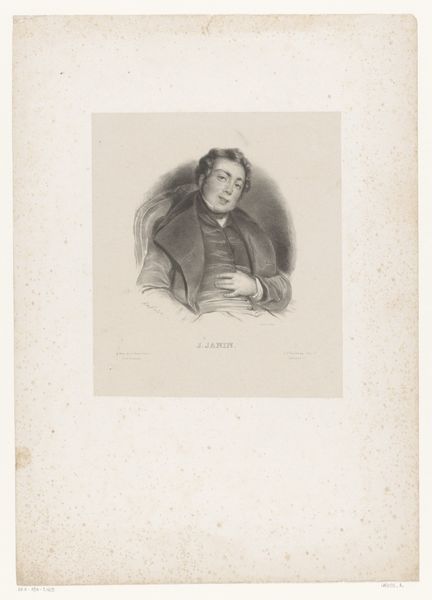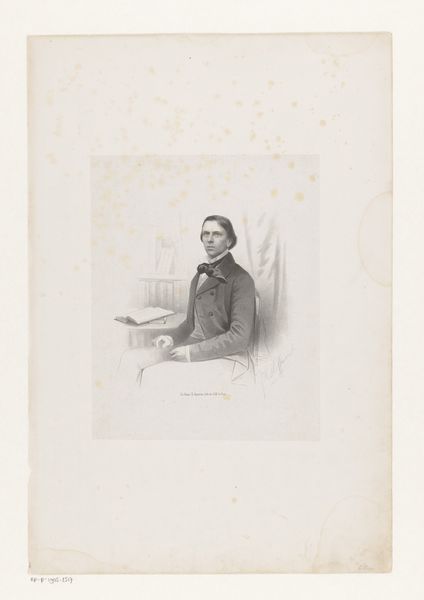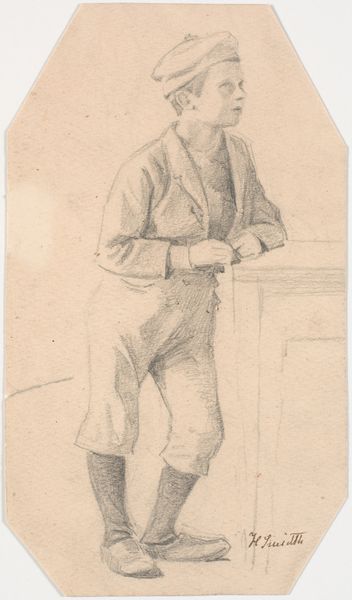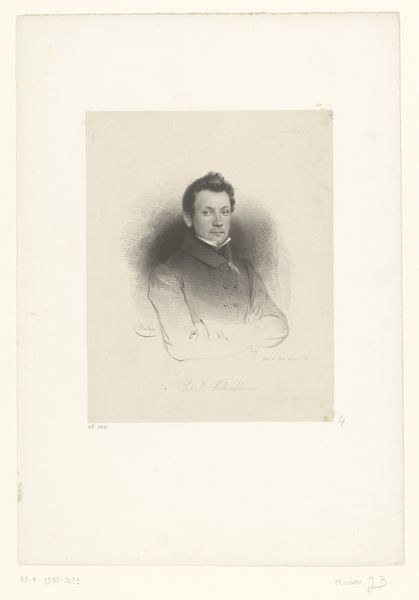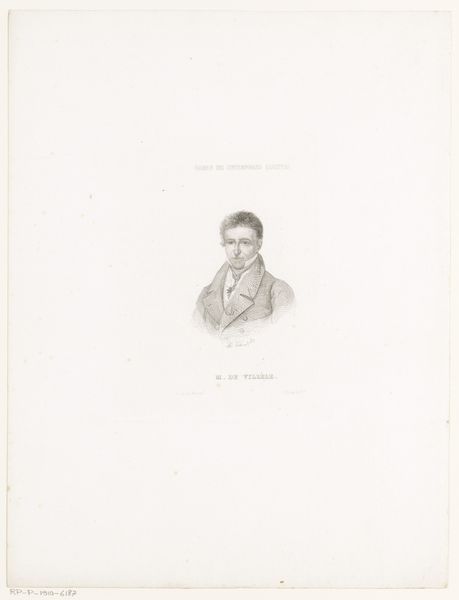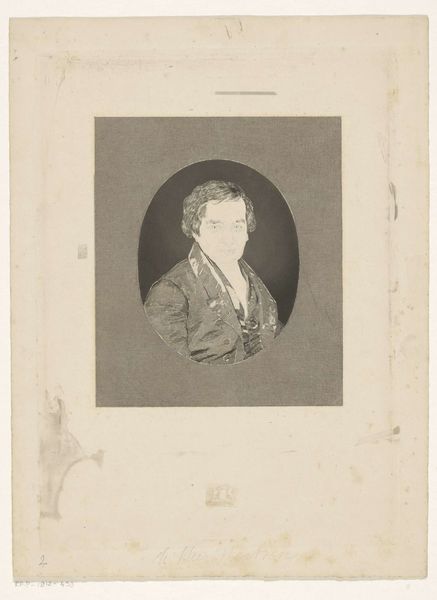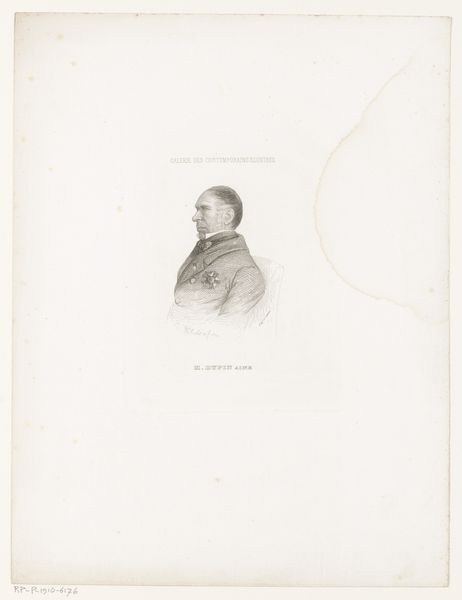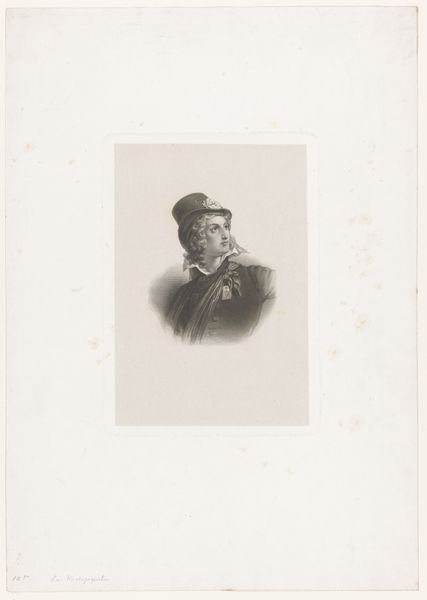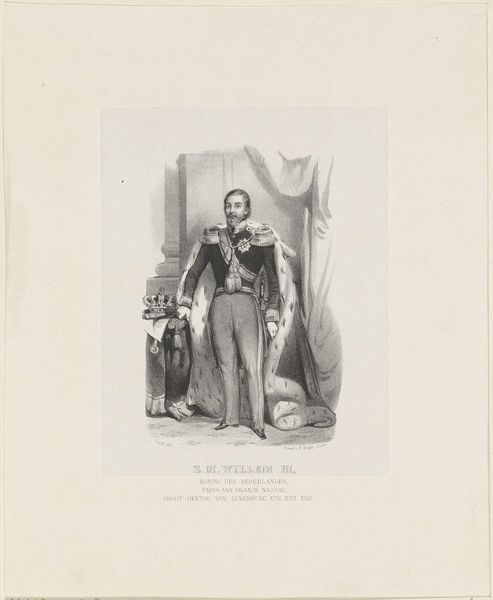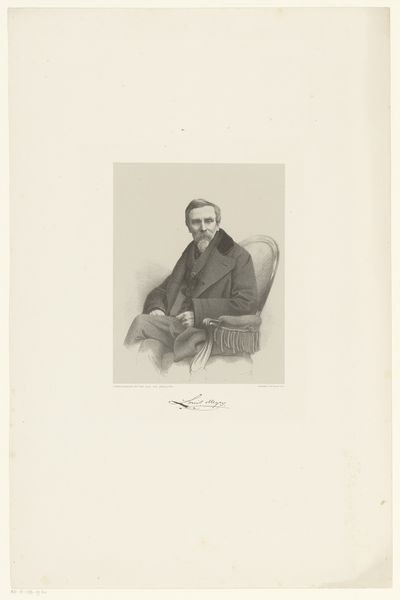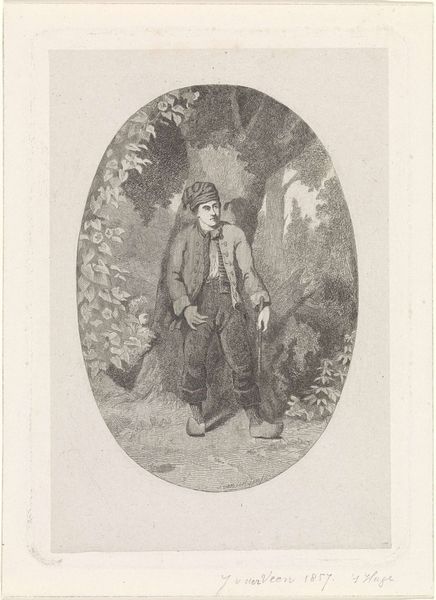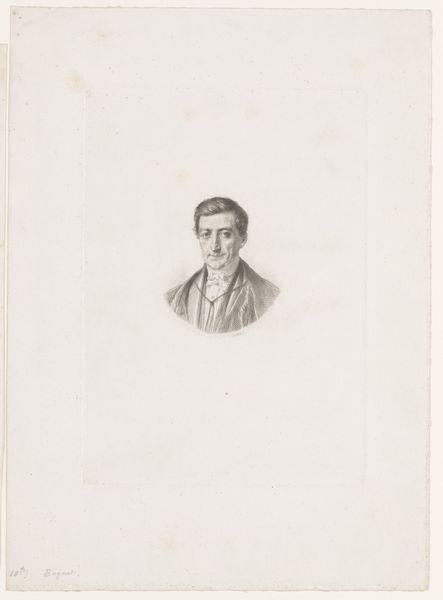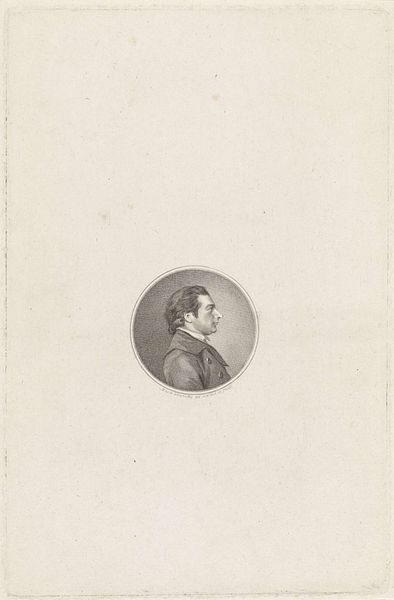
drawing, pencil
#
portrait
#
pencil drawn
#
drawing
#
pencil sketch
#
pencil drawing
#
pencil
#
history-painting
#
academic-art
#
realism
Dimensions: height 280 mm, width 225 mm
Copyright: Rijks Museum: Open Domain
Curator: Today we're looking at an early 19th-century pencil drawing entitled "Portret van schrijver Christiaan Hendrik Clemens," placing its creation somewhere between 1822 and 1845. Editor: The overall impression is one of quiet introspection; the subdued grey of the pencil creates an atmosphere that invites close contemplation, wouldn’t you agree? Curator: Definitely. Note how Clemens is seated, almost swallowed by the ornate armchair and draped in a heavy shawl. It suggests comfort, perhaps privilege, but also confinement. Consider the symbolism: The writer, potentially trapped by his own societal position? Editor: Perhaps. Or maybe his perceived position, and who defined him in relation to that societal structure. We also need to acknowledge this representation. A drawing such as this during that period served specific class functions, defining status as well as documenting likeness. Who made it, for whom, and what did Clemens gain from it? These are the pertinent questions I think it evokes. Curator: That’s very true. Let's talk more about Clemens. What elements of his image, captured in this particular moment, tell us more about societal standards in Europe in this moment in time? The formal attire hints at societal expectations and maybe even creative expression operating within certain social bounds? Editor: Precisely. Though seemingly objective, portraiture is never neutral. How Clemens chose to represent himself and the social pressures that would influence that presentation were powerful markers of identity. The question is: was this subversion, or capitulation? How much of the author's essence did they, or could they, translate? Also, as a portrait drawn from life, the gaze subtly hints to an engagement that moves between the objectified artist and real life subject. Curator: Indeed. It provides a fascinating glimpse into a specific moment in social and literary history through its details. Editor: Exactly. The quiet intimacy that is also implied here invites our participation as active historical readers of his persona. Curator: A potent example, then, of how an artwork such as this can offer not just a depiction, but a social dialogue. Editor: Right. And prompt questions concerning societal role and presentation.
Comments
No comments
Be the first to comment and join the conversation on the ultimate creative platform.
